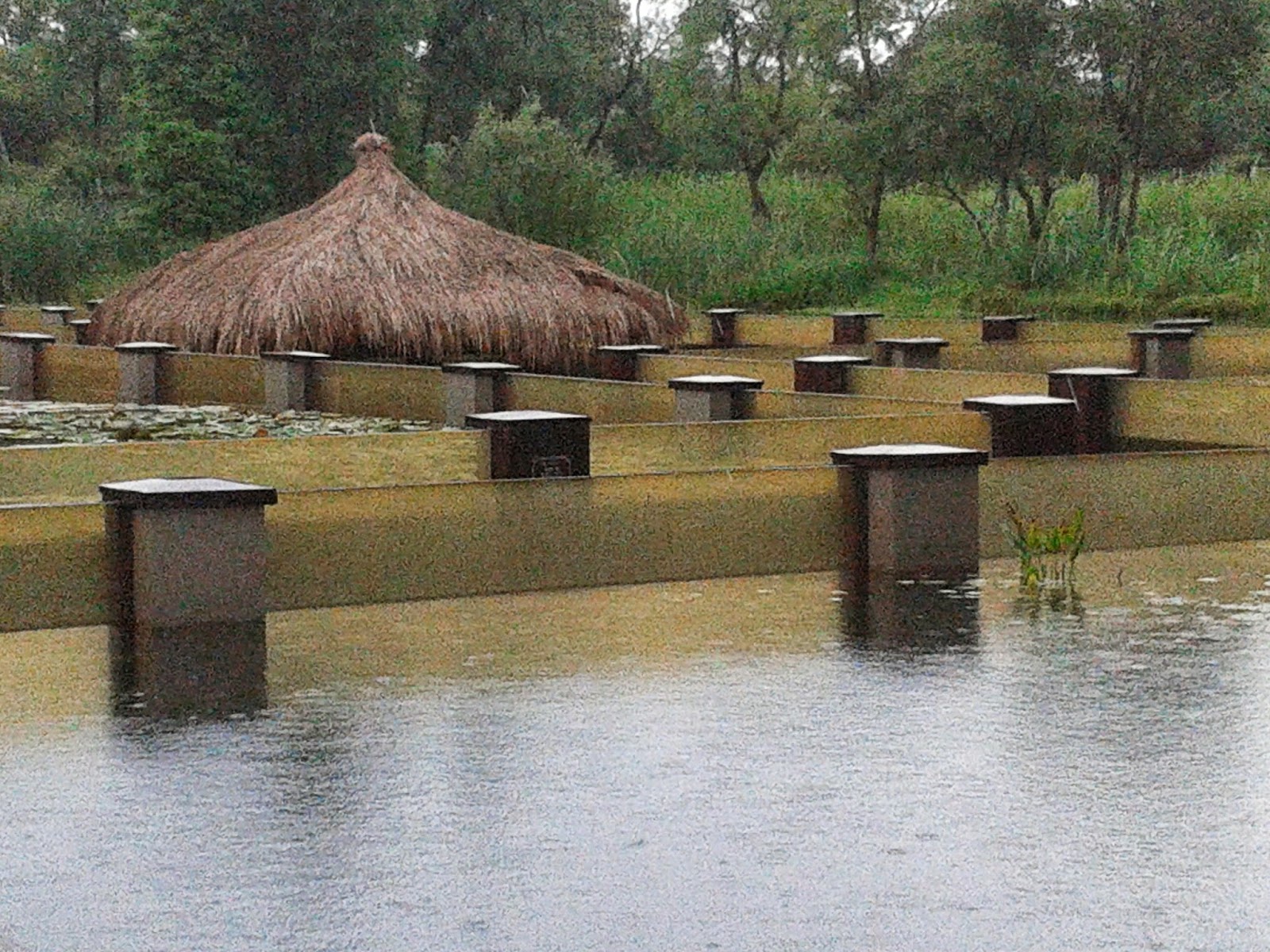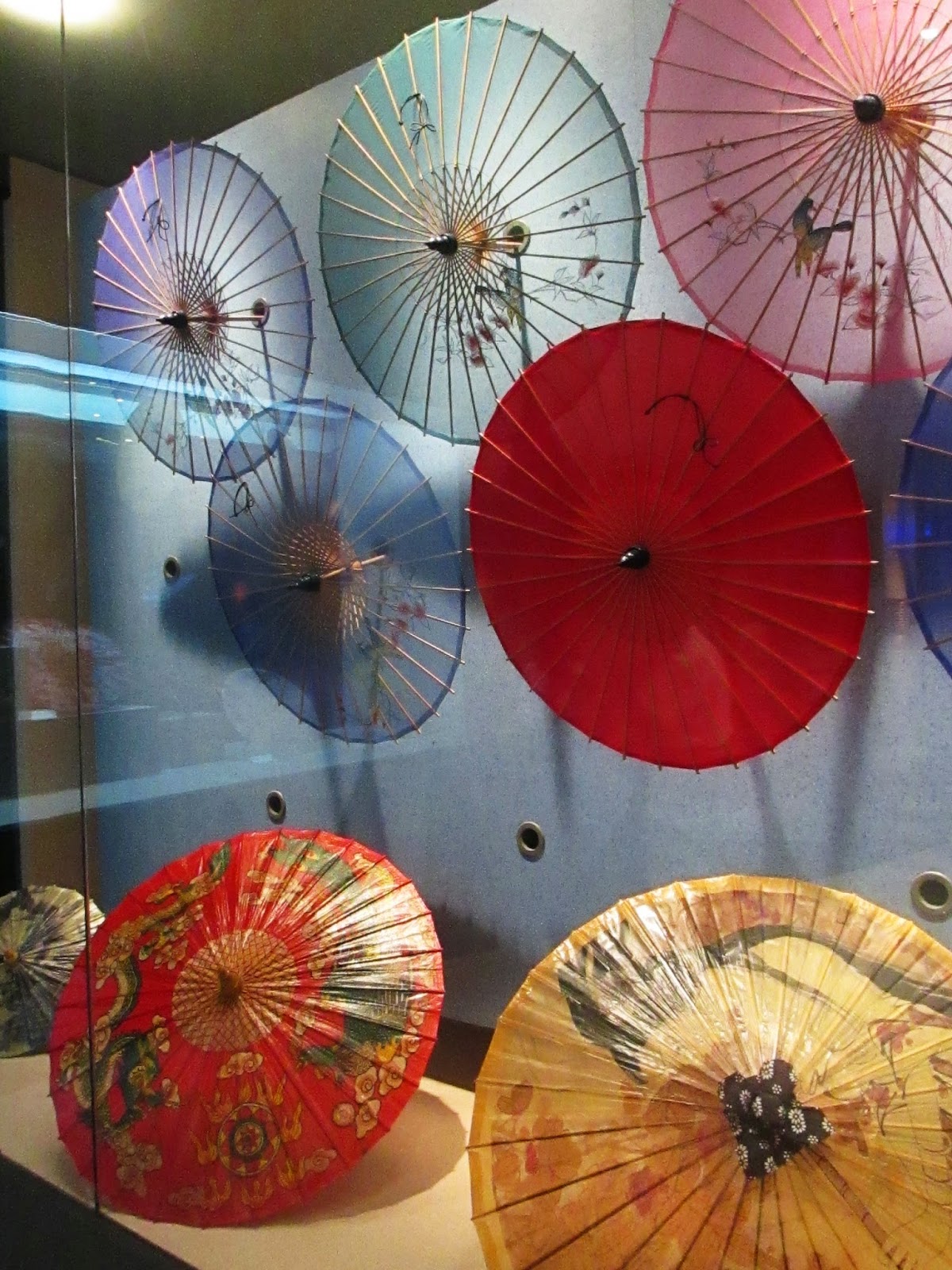Wednesday
was travel day—from Wenzhou to Hangzhou. It was a good day to be traveling, as
it was raining lightly when I left the hotel and then rained heavily for a
couple hours. When I arrived at the station and the security guard told me to
“wait a minute,” while he got the English-speaking woman, I knew this was not
good. The problem was that my train, on which I’d reserved a seat three weeks
earlier, had been “stopped” that day. So I had to change my ticket and take
another train. My new train left three hours later than the original one. I was
happy it wasn’t longer.
This
train trip took three and a half hours. The first part of the trip went along
and through the mountains. There were many rice fields between the train tracks
and the mountains.
Once in
Hangzhou I noticed a sign to the subway and decided to give that a try,
remembering the taxi driver in Xi’an who chatted about how I should have taken
the metro because it is faster and cheaper. There was a map showing the route
with English as well as Chinese. Using my hotel reservation printout, I found
the district and selected what looked like a close stop. I did well. When I got
off, there were signs to West Lake and then there was a sign to the street I
needed. So off I went. Unfortunately, only the first sign to the street had
English; so I had to ask for directions a few times. This happens often.
My
hotel was close to West Lake, one of the main scenic areas in Hangzhou. After
dinner, I walked along the lake for a while, enjoying the evening atmosphere.
I woke
up Thursday morning feeling like I could easily overdo it that day and decided
to take it easy. First, following my philosophy to plan to get out of town
shortly after arriving so I don’t have to worry about it later, I went to the bus
station to purchase my ticket to Huangshan. I probably could have gone to the
station on Monday and gotten on a bus, but I didn’t want to repeat the
Yandangshan experience of having to wait a few hours because I didn’t know what
time the train left. Ticket in hand, when I exited the station, I saw a sign to
Xixi Wetlands National Park. I had thought about going there but had decided
not to because it’s far from the hotel and there are lots of things to do
closer. But, there I was, only 1.5 km away from the park. And, since it was
raining, it seemed appropriate to visit the wetlands. So I took a taxi there.
The rain continued all day, mostly lightly, stopping briefly only a few times.
I encountered more English at the park than I have in most places recently.
Both young women who sold tickets explained them to me in detail well.
 I ended
out spending the whole day at the park because I enjoyed it and I didn’t feel
like going elsewhere, taking it easy. The first part I walked through, an area
full of the huge lotuses, water lilies, and other water plants, was one of my
favorites.
I ended
out spending the whole day at the park because I enjoyed it and I didn’t feel
like going elsewhere, taking it easy. The first part I walked through, an area
full of the huge lotuses, water lilies, and other water plants, was one of my
favorites.
Next I walked through the old street on the way to the “storage
battery operated boats” that transport people around the water. (The shuttle buses are also battery operated.)
On the boat ride, there are four ports to stop at. The longest ride was the first one—half an hour between
ports. It’s a peaceful, beautiful ride.
At that stop, there are a lot of places
to walk to, and I went to most of them. The area is beautiful and I was
enjoying walking there. Two sites are a nunnery and a temple. The woman at the
nunnery greeted me with hands palm to palm. There are a couple lovely, old
houses that are now museums.
The next port has the huge rubber duck that is the
park’s mascot. The boat didn’t stop at the fourth port, which was OK, as I was
ready to be done.
Back at the starting point, I exited the area and went to the
underwater viewing site I had tried to but couldn’t go to earlier because I
hadn’t yet purchased a ticket. I was intrigued enough that I decided I wanted
to see it. They’ve constructed Plexiglas tunnels in the water with pathways
between them so you can look in to see the plants and fish. It wasn’t
spectacular, but it was interesting.
Then I was done with the park. When I got
to the exit, I realized that it wasn’t a good place to get a taxi and ended out
walking back to the bus station (1.5 km) to take the bus back to the hotel. I
felt good that I knew what to do, as sometimes I’ve been in places that aren’t
good to get a taxi and didn’t know what to do.
The
park was a perfect way to spend a rainy day when I didn’t want to overdo it.
General
observations: Young students seem surprised to see me—a foreigner. On the
subway, a boy about ten years old was clearly surprised to see me. His eyes
opened widely. He didn’t speak to me, but he did point me out to his friend.
When he left, he waved. At the park a few children visibly noticed me. Two
girls managed to say “Hi,” which is the greeting I get most in this part of the
country. I asked one girl her name, thinking they might know that. They didn’t,
but their mothers coached them and they repeated after their mothers. It was
fun watching them.
The
recording on the metro advises passengers to “please alight on the left side.”
Friday’s
destination was China’s Grand Canal, which goes through Hangzhou. At 1100 miles
long, it is the oldest and longest canal/man-made waterway in the world.
Constructed mostly in the 6th and 7th centuries, it
connected Beijing to Hangzhou, linking the Yellow and Yangtze Rivers. Now only
the southern part is navigable. Last month it became a World Heritage Site.
Since I had learned that it can be accessed by metro, I decided to have a look
at it and possibly take a boat ride.
I got
to the metro fairly easily. The only kink was that the signs in English
stopped—again. There were signs pointing out the direction to the metro until
the last intersection. Then the only signs were in Chinese. Fortunately, a
cleaning woman was there and pointed the direction for me when I asked. I do
find it frustrating when this happens.
The metro stop for the canal is West
Lake Cultural Square. It has a huge shopping center and a museum. It also has
an old bridge over the canal. I crossed the bridge and joined the line for
boats down the canal. Not sure where they were going, I decided to just get on
with the line. When one boat arrived, a number of people got on, but the people
around me stayed in line; so I did, too. There are modern boats and old-style,
smaller boats. I was glad that the one for us was the latter. The trip took 40
minutes.
The canal has a lot of barges carrying stones and such up and down,
which reminded me of watching the barge traffic on the Mekong delta.
We went
under several bridges decorated with carvings.
As we approached what turned out
to be the stopping point, the canal is lined with traditional houses.
The
boat’s destination was the 17th century Gongchen Bridge, the highest
and longest arched bridge in the area.
After walking over the bridge, I
discovered that the area is a tourist destination and has three museums and a
center for demonstrating traditional arts. This was good news for me, as I like
museums and arts. First I went to the demonstration center, which has sections
demonstrating, among other crafts, pottery, purple clay, oil paper umbrellas,
fans, and scissors.
At the man making traditional scissors, I met two American
women about my age who live on the other side of the bridge. They have both
lived in Asia for about 30 years and are in the textile business. They have
items made here and exported mostly to the U.S. They don’t know Chinese
language but had a younger, possibly also American, woman with them who is
fluent. They recommended the Swords, Knives, and Scissors Museum.
I
started with the Fans Museum. There I learned that fans were first round and
then folded. It’s uncertain whether they first started in Japan or China.
I
decided that I needed to eat, but this was not a good place to be looking for
food. I found one restaurant and went in. The menu presented was in Chinese
with no pictures. There are several foods that I can order, but I drew a blank
when I looked at the menu. The waiter suggested curry, and we were discussing
that when an American man—the third or fourth American I saw that day, which is
a record—came over and offered the assistance of his Chinese wife who is fluent
in both English and Chinese. She suggested a noodles dish that they were having
but said it’s very big. She got the waiters to agree to serve me half an order.
Even so, it was a huge bowl and I ate only about a fourth of it.
Next I
went to the Umbrellas museum. It features both oil paper umbrellas and silk
umbrellas. There was a group of what looked like middle school students running
around getting information to record on their brochures.
Finally I went to the Swords,
Knives, and Scissors Museum. Although it was interesting to see the history of
swords and knives, it was my least favorite of the three.
Then it
was time to head back. The boat that arrived was the modern, faster on, which
was fine since I’d had the leisurely trip up the canal. The return took only 30
minutes.
When I got off the metro, I decided to walk to Wushan Square, which
I’d seen on the map and which has an ancient street in the area and which is in
the direction I needed to go. The area
has an abundance of old style buildings.
One area has what they call the
beginning of modern buildings—in the early 20th century—combining
the new, European style with the traditional style. It was fun to walk around
the area looking at the buildings and shops in them. Since it was evening, the
area was getting crowded and became more crowded as I walked around.
Vendors
sell all kinds of souvenirs. On the way out I came across a plaza that was
divided into three sections: two for line dancing and one for roller skating.
When I
arrived back at the intersection with the hotel’s street, I turned left. After
an appropriate time, I realized that I hadn’t come upon any of the landmarks I
knew and realized that the intersection wasn’t where I thought it was. When I came
to a park, I decided to enter it and walk back along the lake, joining the
Chinese out for a walk. When I arrived at the hotel, I still had energy for the
first time in a few days. It felt good not to be exhausted at the end of the
day.

























No comments:
Post a Comment